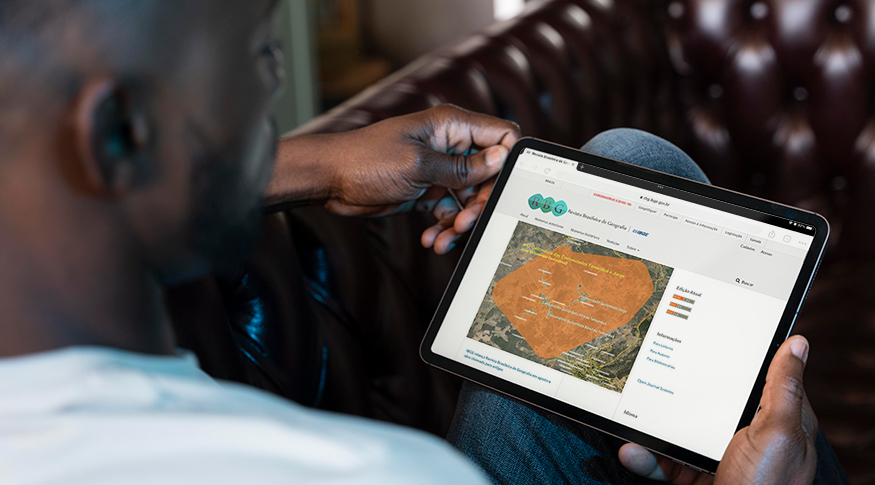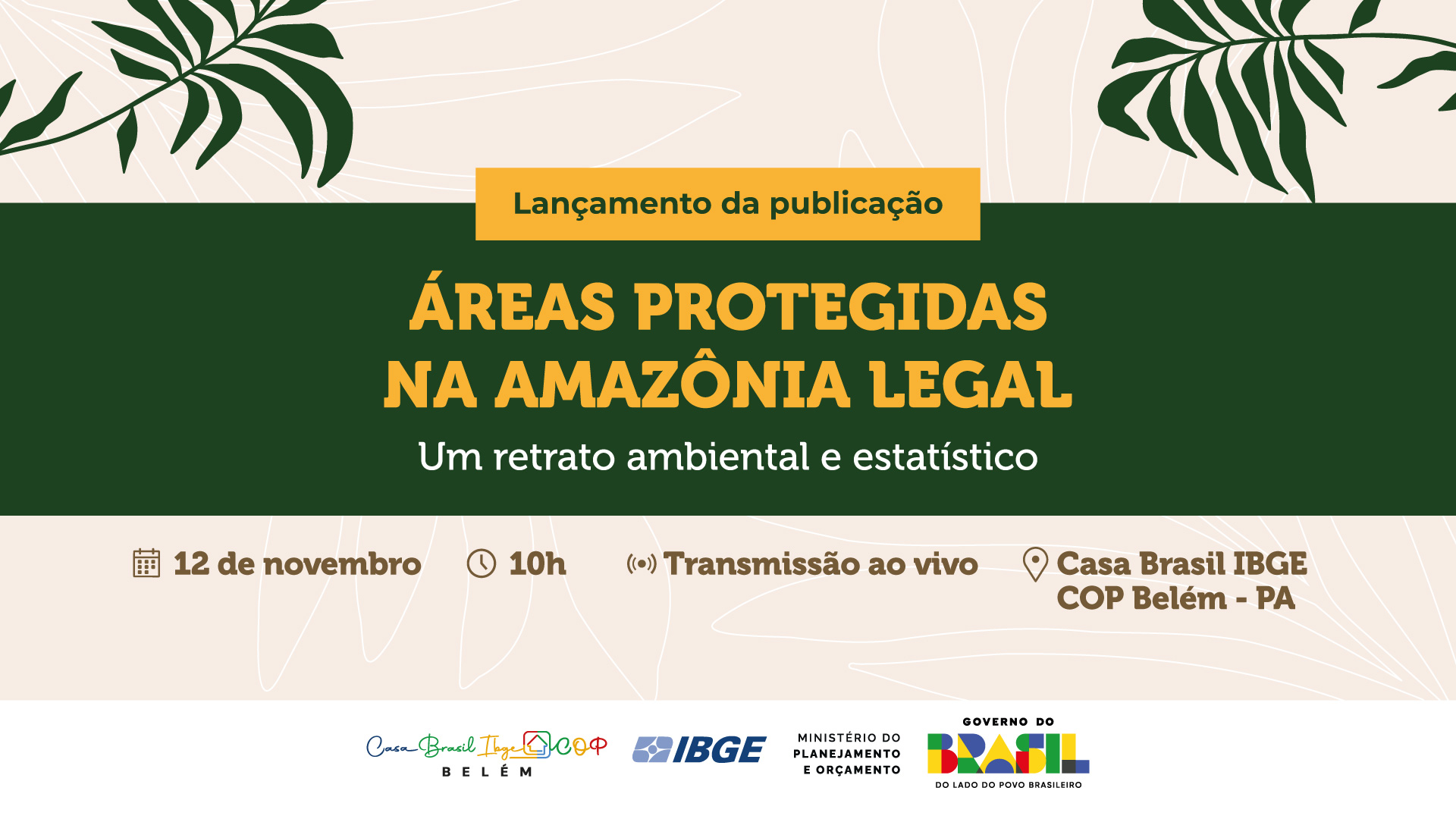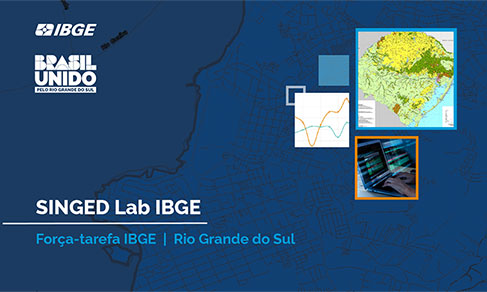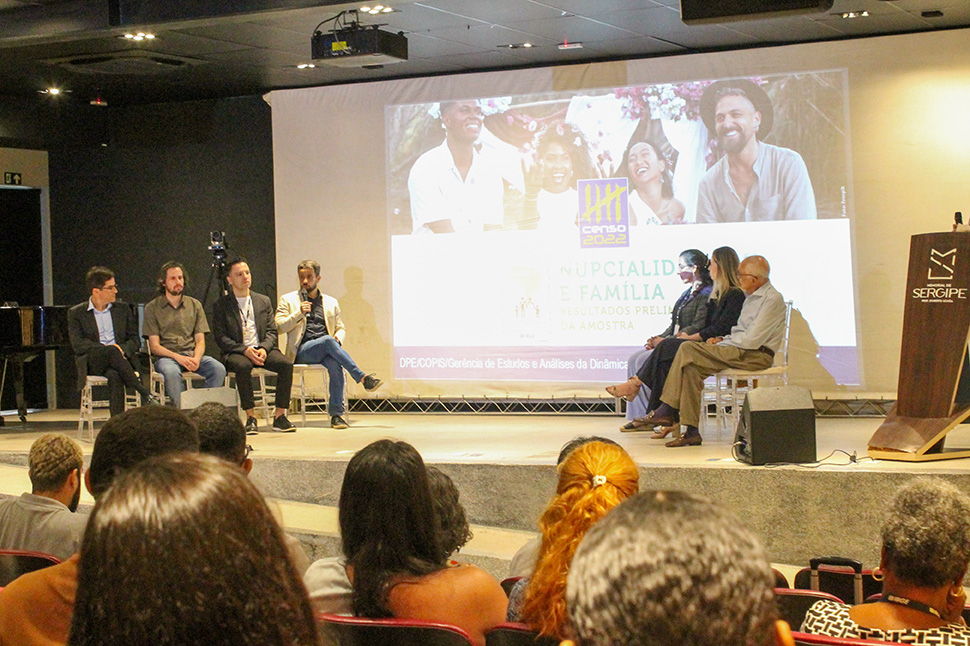RBG
IBGE releases 67th edition of the Brazilian Journal of Geography
September 28, 2022 10h00 AM | Last Updated: September 28, 2022 11h07 PM
Highlights
- The Brazilian Journal of Geography (RGB) brings three interviews about the census operation. The first one is about the enumeration of traditional peoples and communities.
- In the second interview, the technical manager for the 2022 Census, Luciano Tavares Duarte, speaks about the process of questionnaire elaboration.
- In the interview with the IBGE’s director of surveys, Cimar Azeredo, the highlights are innovations in the census operation and the bigger interaction between the departments of geography and statistics.
- The new edition of RBG also presents two articles selected among those in the continuous submission assortment and 13 works taken from the II Pan American International Symposium on Toponymy.

The IBGE releases today (28) the first volume of edition 67 of the Brazilian Journal of Geography (RBG). The publication presents two articles, three interviews about the 2022 Census and 13 works selected among those that stood out in the e highlights in the II Pan American International Symposium on Toponymy, held in November last year.
The interviews about the 2022 Census are part of the celebration of the 200th anniversary of Brazil’s Independence. In the previous edition, the magazine published two interviews about the census operation: one with the IBGE’s Geosciences director, Claudio Stenner, and the second one with the coordinator for the National Address List for Statistical Purposes (CNEFE), Wolney Cogoy de Menezes. In the volume released today, the professional in charge of Technical Projects on Traditional peoples and Communities, Marta Antunes, and the manager of Traditional Territories and Protected Areas, Fernando Damasco, speak about the entire process of institutional preparation for the enumeration of traditional peoples and communities.
“This edition is part of the celebration of the 200th anniversary Brazil’s independence, which is taking place while the IBGE is in the field with the biggest census operation in our history. In this volume, the first interview is about traditional peoples in the Census and the innovations made in order to understand these populations, such as the Areas of Operational Interest (AOI). That was done because the territorial division of enumeration areas is not enough to cover these populations entirely,” says Maria Lúcia Vilarinhos, chief editor of the journal.
The journal cover itself in this edition is an AOI and encompasses quilombola communities. “That is a great advance in the Census operation. With these innovation in coverage of traditional peoples, the institute has advanced in the mission of portraying Brazilian society, because these peoples have always been here,” the editor explains. “Another aspect of the interview is the special training for enumerators that work in these areas,” she adds.
The second interviewee is the technical manager for the 2022 Census, Luciano Tavares Duarte. “In this conversation, we spoke about the elaboration of the questionnaire and about the challenges posed by the inclusion of new topics and questions, as in the case of autism diagnosis. We also discussed the technological advance in the census operation in comparison with what was done in 2010. Now, with the DMC (Mobile Data Collection Device), equipped with a georeferencing tool, it is possible to monitor data collection and the performance of enumerators during the operation. If there any problems in their route, for example, we can adjust that while the operation is still into the field.”
In the third interview, the IBGE’s diretor of surveys, Cimar Azeredo, spoke about the bigger integration between the departments of geography and statistics in the 2022 Census. “In addition to that, he explained how the interactive panel of Continuous PNAD Contínua affected other surveys in the institute. Mr. Pereira, who is very experienced in census operations, also spoke about how the 2022 edition is an innovation at international level. An example is the group of international observers who is monitoring the collection in different areas in the country,” Ms. Vilarinhos says. In 2023, with the results of this census already available, RBG editions may bring other interviews about the census operation.
In terms of the continuous submission articles, the first one, “Third sector-related urbanization in Quixadá – CE”, by Samuel Antonio Miranda de Sousa, approaches the type of urbanization in this municipality of the state. “Throughout the 19th and 20th centuries, in urbanization processes, in which the population is attracted from the rural to the urban area, there was a lot of influence of industry implementation in cities. In this article, the author shows that, in Quixadá, this process was associated with the growth of the third sector, that is, of trade and services”.
The second article, entitled “State-of-the-art cartography of landscapes for the Brazilian semi-arid areas”, by Riclaudio Silva Santos, discusses the representation of the semi-arid areas in the country. “This is a very interesting article as it shows how different institutes and researchers, in a short period of time, propose different perspectives for the Brazilian semi-arid region. In general, when it comes to this area, we think of the sertão (scrubland in northeastern Brazil). But how is it delimited? The study shows that may vary, by presenting 12 maps with different areas delimited,” the editor explains.
About the RBG
Edited by the IBGE, the Brazilian Journal of Geography (RBG) ) is one of the oldest and most respected technical-scientific publications in Brazil in the field of geography and related sciences. With short interruptions, the RBG was published every quarter for almost 70 years between 1939 and 2006, being considered a reference journal. Many of its articles have opened important knowledge frontiers and become classics, both nationally and abroad. In 2016, the Institute resumed the publication of this journal with a new format – as an electronic edition released every semester.




















